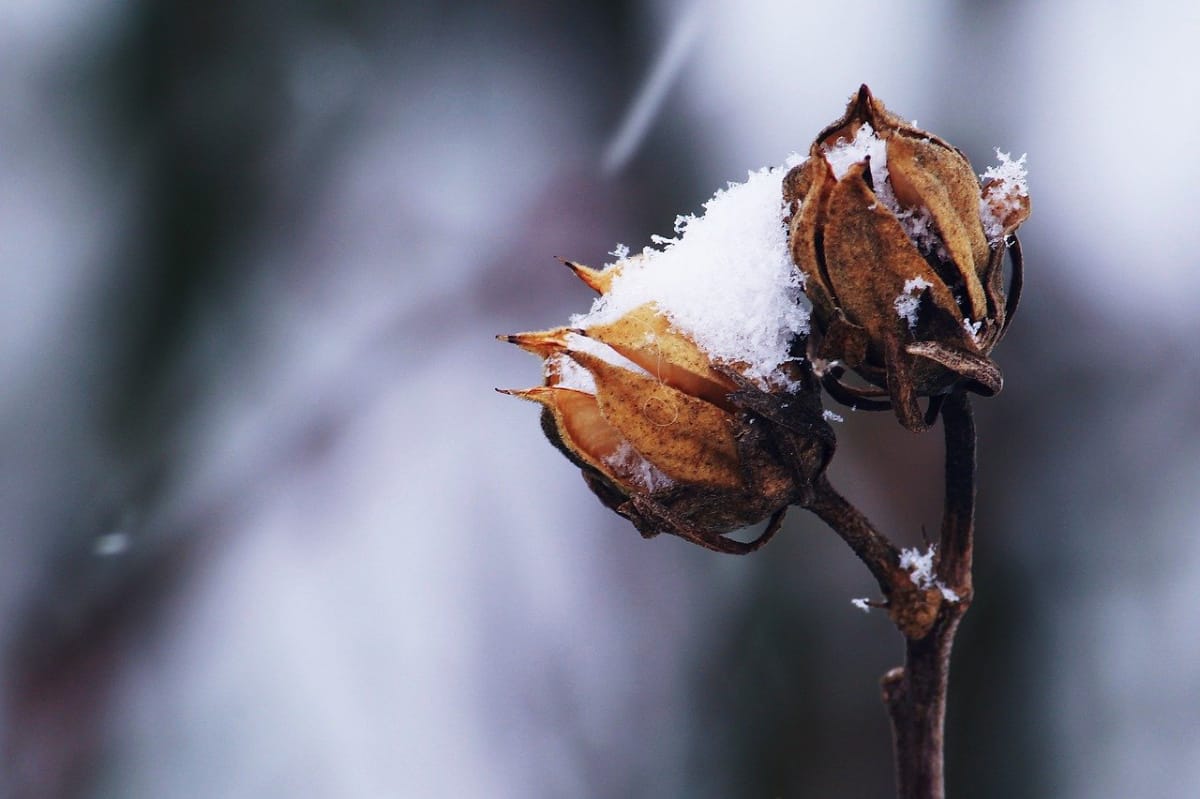

Uh oh...
It appears that you're using a severely outdated version of Safari on Windows. Many features won't work correctly, and functionality can't be guaranteed. Please try viewing this website in Edge, Mozilla, Chrome, or another modern browser. Sorry for any inconvenience this may have caused!
Read More about this safari issue.

Winter gardening sounds mutually exclusive in Arkansas, where temperatures can plunge fifty degrees in a matter of hours. Cold days and long nights feel especially trying for those of us who love to keep busy in the garden. Yes, feeling down about being stuck inside is a real thing, y’all. And isn’t it crazy how quickly it happens? One day I’m sweating to stay ahead of the weeds, and then almost overnight, the world turns frigid and brittle and brown.
All is not lost, gardening friends. I have a few winter gardening projects that will help combat cabin fever. Yes, a few of these projects belong in the chore category, but sometimes even a garden chore will lift the spirit when nature is involved.
Winter Gardening Ideas

- Did you forget to plant winter annuals? There’s still time. Head to the nursery and pick up a flat of pansies or violas. Or maybe a few pots of kale or Swiss chard. Winter color near your front door and back gate will provide an instant pick-me-up.
- If you did plant pansies and violas, nourish your babies every three weeks with a water-soluble liquid fertilizer of 15-30-15. Indoor houseplants will benefit from fertilizing, too.

- On a sunny (not too cold) day, plant spring-blooming bulbs such as tulips, crocus, and daffodils. When early spring arrives, you’ll be thrilled with the results.
- During nights of hard freeze (below 28 degrees), cover your winter vegetable garden.
- Continue monitoring newly planted trees and shrubs to make sure they don’t dry out. Giving plants a good drink before a particularly hard freeze will help them survive the worst weather. Remember to keep your indoor plants watered, too. Heat from the furnace and fireplace dries them out quickly.

- During winter, when insects are harder to find, birds are more reliant than ever on birdseed. Keep your feeders clean and filled. For a list of the top ten foods for winter birds, click HERE.
- Make sure your birds have water, too. Break up ice in birdbaths or use a heated bowl.
- Now is a great time to organize your seed drawer/packets. When spring arrives, you’ll be all set to plant! There’s no need to spend money on a fancy organizer, although in my dreams, an antique card catalog cabinet would be the perfect storage container! Jars, envelopes, a recipe box—anything will do. The critical thing to remember is to store seeds in a cool, dry, dark place to prevent early germination.

- Speaking of seeds, why not organize (or attend) a local seed swap? National Seed Swap Day is the last Saturday in January. For tips on hosting a seed swap, visit Southern Exposure Seed Exchange.
- Leaves on the ground are beneficial for insects and birds. In fact, many small critters depend on leaves. You have a big-picture decision to make. A heavy layer of leaves can harm your lawn during winter. Do you rake, shred, and add them to your compost or leave them for nature?
- If heavy snow burdens the branches of your trees, remove the snow to protect limbs from breaking. (A broom works well for this.)
- Herbs growing on a sunny, south-facing windowsill will put a smile on your face and add flavor to your winter recipes. Start with established plants from your favorite nursery (or order online). Easy-to-grow herbs include chives, oregano, rosemary, thyme, and parsley.

- Plant amaryllis and paperwhite bulbs indoors for winter blooms. If you time it right, you’ll be enjoying these beauties during the holidays. Hint: they make thoughtful, inexpensive gifts, too! Plant-to-bloom time is approximately 6-8 weeks.
- Check your native garden centers, urban farms, and botanical gardens for upcoming classes. Many of these garden and farm businesses offer garden-themed classes such as wreath-making or creating birdseed ornaments. Taking classes and being around knowledgeable gardeners has a way of soothing the gardening beast during dreary winter.

- Create a terrarium and enjoy a spot of green all winter.
- Go for a walk around the neighborhood or hike on a nearby trail. No, this suggestion doesn’t technically fall into the category of winter gardening, but simply being out in nature is a good thing. I learn about plants by studying them during various seasons, including winter. To aid with identification, take your bird and plant guides along.
- Jump for joy when the spring seed catalogs begin to fill your mailbox. Study them. Sketch out your garden beds and think about areas where you can squeeze in new plants. It’s never too early to start dreaming about your 2020 garden.
I hope a few of these ideas will help ease the winter gardening blues. And if they don’t, there’s always hibernation. A good book and a cup of cocoa will do wonders.
We do the work.
You check your email.
Sign up for our weekly e-news.
Get stories sent straight to your inbox!












 Leave a Reply
Leave a Reply
Use a Thrift Store photo album for seed pkts. Fun to glance thru, make plans, on a cold Winter day. Alphabetical works for me. I use two albums, one for Spring and one for Fall.